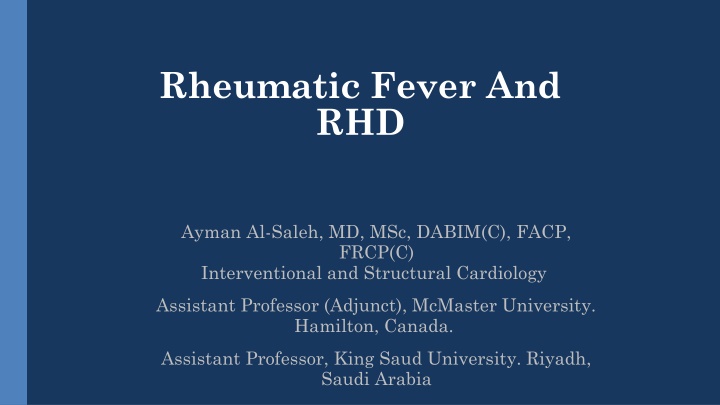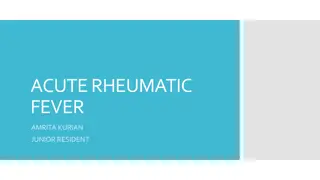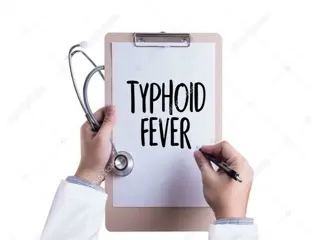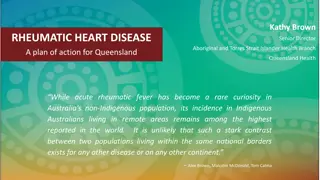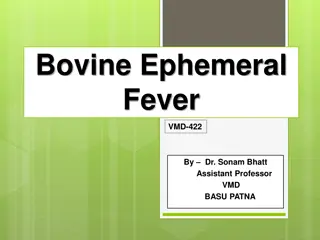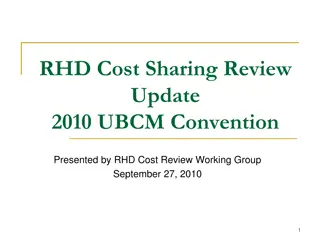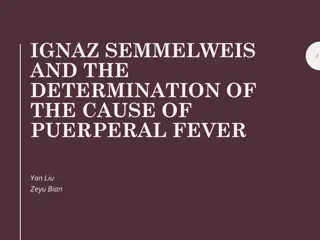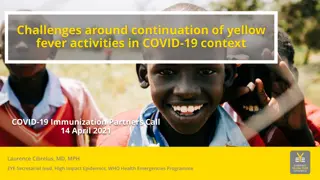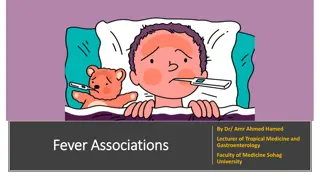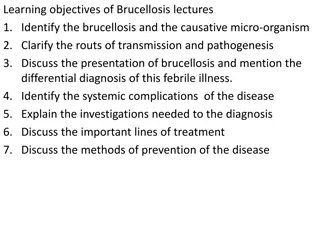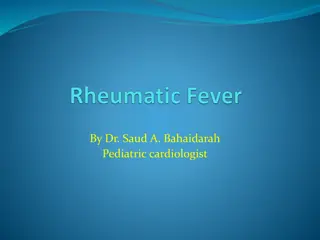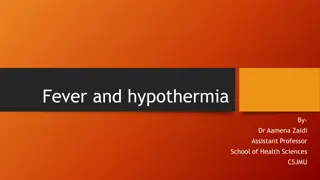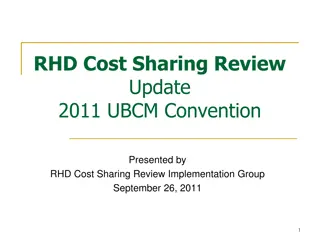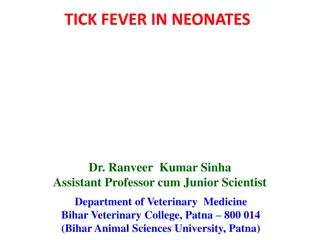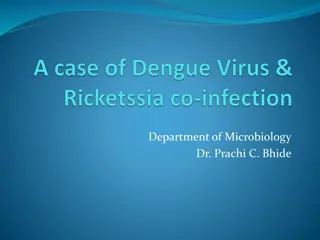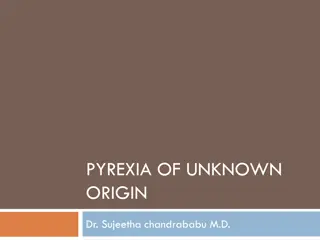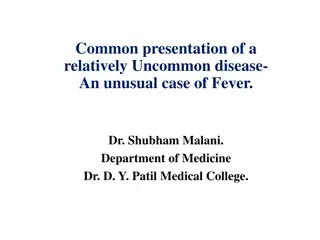Rheumatic Fever and RHD: A Comprehensive Overview
Rheumatic fever and rheumatic heart disease (RHD) are significant health issues, impacting individuals, especially children and young adults. Explore the pathologic lesions, global burden, and epidemiological background of these conditions, with a specific focus on Saudi Arabia. Learn about the incidence rates, long-term complications, and the evolving landscape of these diseases. Understand the diagnosis, management, and prevention strategies to tackle this complex health challenge.
Download Presentation

Please find below an Image/Link to download the presentation.
The content on the website is provided AS IS for your information and personal use only. It may not be sold, licensed, or shared on other websites without obtaining consent from the author.If you encounter any issues during the download, it is possible that the publisher has removed the file from their server.
You are allowed to download the files provided on this website for personal or commercial use, subject to the condition that they are used lawfully. All files are the property of their respective owners.
The content on the website is provided AS IS for your information and personal use only. It may not be sold, licensed, or shared on other websites without obtaining consent from the author.
E N D
Presentation Transcript
Rheumatic Fever And RHD Ayman Al-Saleh, MD, MSc, DABIM(C), FACP, FRCP(C) Interventional and Structural Cardiology Assistant Professor (Adjunct), McMaster University. Hamilton, Canada. Assistant Professor, King Saud University. Riyadh, Saudi Arabia
Lecture Outline What is ARF And RHD? Diagnosis Jones Criteria Differential Diagnosis Investigations, Management Rheumatic Valvular Heart Disease Prevention
Rhuematic Fever Follows group A beta hemolytic streptococcal throat infection It represents a delayed immune response to infection with manifestations appearing after a period of 2-4 weeks Age 5-15 yrs A multisystem disease RHD is a long-term complication of ARF Major effect on health is due to damage to heart valves
Pathologic Lesions Ashcoff nodules Fibrinoid degeneration of connective tissue, inflammatory cells
Global Burden of RHD-WHO A leading cause of CV morbidity & mortality in young people Total cases with RHD 15.6 Millions CHF:3Million,valve surgery required in 1Million Annual incidence of RF: 0.5 Million, nearly half develop carditis Estimated deaths from RHD: 250,000/YR Imposes a substantial burden on health care systems with limited budgets
Epidemiologic Background The incidence of RF and the prevalence of RHD has declined substantially in Europe, North America and other developed nations this decline has ben attributed to improved hygiene, reduced household crowding, and improved medical care
Epidemiologic Background The major burden is currently found in low and middle income countries (India, middle east), and in selected indigenous populations of certain developed countries (Australia and Newzealand). A disease of poverty and low socioeconomic status In underdeveloped countries RHD is the leading cause of CV death during the first five decades of life
ARF and RHD in Saudi Arabia In developed countries the incidence of ARF has declined over past 50 years, incidence ranging 0.2 -0.64/100,000 (USA). ARF incidence in Eeastern province of SA was 22/100,000, age 5-14 years. ARF incidence in Kwait 29/100,000, age 5-14 years A study from Western province showed a prevalence of RHD 2.4/1000, age 6-15 years. A large study showed an overall prevalence of ARF and RHD in SA 3.1/1000 , age 6-15 In Egypt prevalence of RHD, 5/1000 school-children In Yemen 36.5/1000 school-children
Diagnosis of ARF No single test to diagnose ARF The symptoms and signs are shared by many inflammatory and infectious diseases Accurate diagnosis is important Overdiagnosis will result in individuals receiving treatment unnecessarily Underdiagnosis may lead to further episodes of ARF causing damage, and the need for valve surgery, and or premature death
Diagnosis of ARF Diagnosis is primarily clinical and is based on a constellation of signs and symptoms, which were initially established as the Jones criteria In 1944 Dr. TD Jones published a set of guidelines for diagnosis of ARF Jones Criteria Subsequently Modified in 1965, 1984 and 1992by AHA Revised recently -2015 by AHA
Carditis Occurs in 50-70% of cases Only manifestation of ARF that leaves permanent damage May be subclinical Murmurs of MR or AR may occur in acute stage while mitral stenosis occurs in late stages Cardiomegaly and CHF may occur
Arthritis Common: present in 35-66% Earliest manifestation of ARF Large joints: The knees and ankles, shoulders, elbows Migrating , Fleeting polyarthritis Duration short < 1 week Rapid improvement with salicylates Does not progress to chronic disease
Sydenham Chorea Also known as Saint Vitus dance Occur in 10-30%, extrapyramidal manifestation, female predominnce Abrupt Purposeless involuantry movements of muscles of face, neck, trunk, and limbs. Delayed manifestation of ARF -months Clinically manifest as-clumsiness, deterioration of handwriting,emotional lability or grimacing of face 14
Subcutaneous Nodules Occur in 10% Usually 0.5 2 cm long Firm non-tender Occur over extensor surfaces of joints, on bony prominences, tendons, spine Short lived: last for few days Associated with severe carditis
Erythema Marginatum Present in <6% Less common, but highly specific manifestation of ARF Reddish border, pale center, round or irregular serpiginous borders, non- pruritic, transient rash Occurs on trunk, abdomen or proximal limbs Associated with carditis
2015 Revised Jones Criteria A firm diagnosis requires 1) 2 Major manifestations or 1 Major and 2 Minor manifestations and 2 ) Evidence of a recent streptococcal infection.
2015 Revised Jones Criteria Evidence of Preceding GAS Infection: 1) Increased or rising ASO titer or Anti- Dnase B titer 2) A positive throat culture
Rheumatic Fever Recurrences Reliable past history of ARF: 2 major or 1 major and 2 minor or 3 minor manifestations sufficient for diagnosis Presence of antecedent streptococcal infection When minor manifestations only present exclude other causes.
Treatment of ARF Bed rest Salicylates : Aspirin 75-100 mg /kg/day given as 4 divided doses for 6 -8 weeks Attain a blood level 20-30 mg/dl Penicillin: Procaine Penicillin 4 million units/day x10 days Prednisolone:2mg/kg/day taper over 6 weeks, Given when there is severe carditis Heart Failure Treatment: diuretics, ACEI
Chronic Rheumatic Heart Disease Most commonly in Mitral-70% Frequently in Aortic-40% Less frequently Tricuspid-10% Rarely pulmonary valve-2% Mitral Stenosis is more common in females(3:1), while males have higher incidence of Aortic Regurgitation
Mitral Stenosis The normal MVA= 4-5 cm2 In severe ms <1.5 cm2 High LAP The rise in LAP causes a similar rise in pulmonary capillaries, veins and artery
Clinical Features Dyspnea Fatigue Palpitation Hemoptysis (10%) Hoarseness ( Ortner s syndrome) Dysphagia Storke or peripheral embolization
Clinical Features Cyanosis (Mitral facies,malar flush) Tapping apex ( S1) Parasternal heave Diastolic thrill Accentuated S1 , accentuated S2 Opening snap Mid-diastolic rumble
Investigations CXR Straightening of the left heart border Double density Kerley B lines , CA in MV ECG: LAE, P Mitrale ,RV dominance Echodoppler
Management B-Blockers ,CCB Digoxin ( AF ) Warfarin Balloon Valvuloplasty Mitral valve replacement
Mitral Regurgitation Asymptomatic Dyspnea , orthopnea, PND Displaced PMI, Thrill Soft S1, Pansystolic murmur Treatment is surgical
Aortic Regurgitation-Signs Water-hammer / collapsing pulse Wide pulse pressure Corrigan s sign De Musset sign Muller sign Quincke s pulse Hill s sign
Symptoms Angina Syncope Dyspnea
Signs Arterial Pulse wave form : Plateau Small (Parvus) Slow rise (Tardus) Sustained not displaced PMI Systolic thrill S4
Signs Late peaking of murmur Single S2 : Soft or absent A2 Paradoxical splitting of S2
Aortic Valve Disease Treatment: Aortic valve Replacement Transcathter Aortic Valve Replacement
Secondary Prevention of Rheumatic Fever (Prevention of Recurrent Attacks) Agent Dose Mode Benzathine penicillin G 1 200 000 U every 4 weeks* Intramuscular or Penicillin V 250 mg twice daily Oral or Sulfadiazine 0.5 g once daily for patients 27 kg (60 lb Oral 1.0 g once daily for patients >27 kg (60 lb) For individuals allergic to penicillin and sulfadiazine Erythromycin 250 mg twice daily Oral *In high-risk situations, administration every 3 weeks is justified and recommended
Duration of Secondary Rheumatic Fever Prophylaxis Category Duration Rheumatic fever with carditis and 10 y since last episode residual heart disease or until age 40y ,(which- (persistent valvar disease*) Rhumatic fever with carditis 10 yrs or until age 21yrs ever is longer), sometimes life long prophylaxis But no residual VHD (whichever is longer) Rheumatic fever without carditis 5 y or until age 21 y, ( whichever is longer) *
